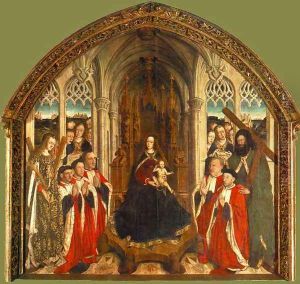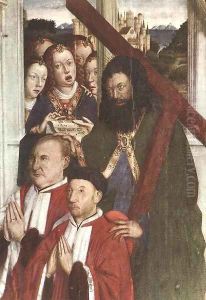Lluis Dalmau Paintings
Lluis Dalmau was a Catalan painter, active during the mid-15th century, a period that marked the Late Gothic and early Renaissance in Spanish art. Not much is known about his early life or training. His presence in the historical record is primarily noted in 1428, when he was appointed as a court painter to Alfonso V of Aragon. This position indicates that Dalmau was already a painter of some repute by the time of his appointment.
Dalmau's work is known for its meticulous detail and adherence to the International Gothic style, characterized by elegant and elongated figures, the use of vibrant colors, and intricate ornamentation. However, his exposure to Flemish painting traditions, possibly through a trip to the Low Countries which is suggested by historical documents, also influenced his style. This trip is believed to have occurred between 1431 and 1437, as he is documented to have been in Flanders in the service of the king.
One of Dalmau's most famous works is the 'Virgin of the Consellers', painted in 1443-1445, which is housed in the Museu Nacional d'Art de Catalunya in Barcelona. This painting stands out for its unprecedented realism, which was inspired by the Flemish school of painting. It is one of the few works attributed to him with certainty, and it showcases his ability to blend the Gothic tradition with the emerging Renaissance sensibility. The meticulous rendering of textures and materials, as well as the realistic depiction of human figures and space, highlight Dalmau's skills and his role as a conduit for the introduction of Northern European painting techniques into Spain.
The exact date of Dalmau's death is uncertain, but it is believed to have occurred around 1460. His legacy is significant in the context of Spanish art history, as he represents a transitional figure whose works reflect the shifting artistic paradigms of his time. Despite the scarcity of surviving works attributed to him, Lluis Dalmau is remembered for his role in bringing the innovations of the Flemish Renaissance to the Iberian Peninsula, influencing the direction of Spanish art in the late 15th century.

